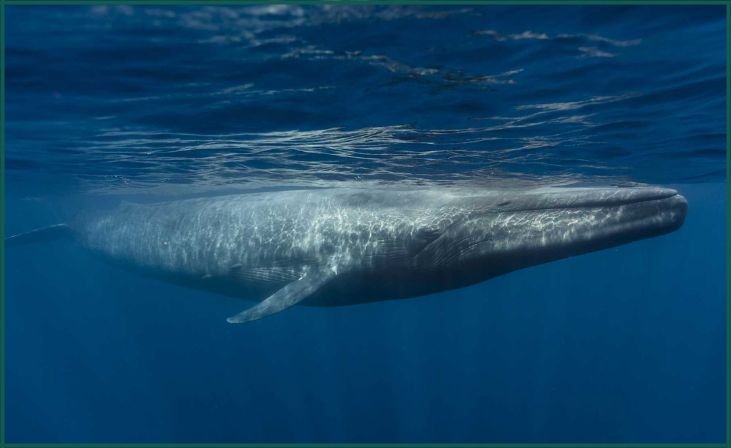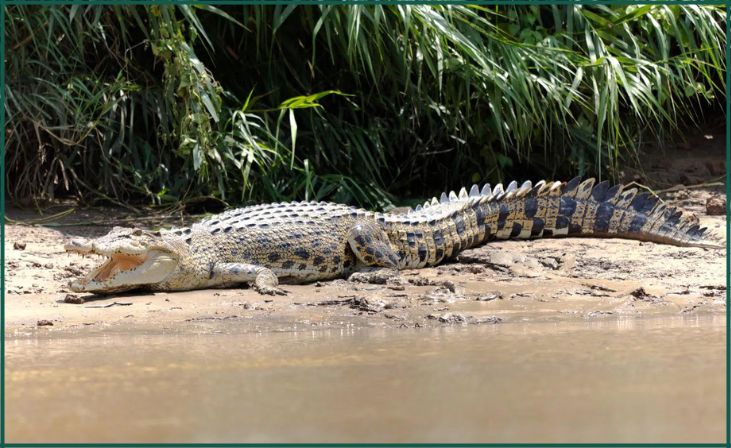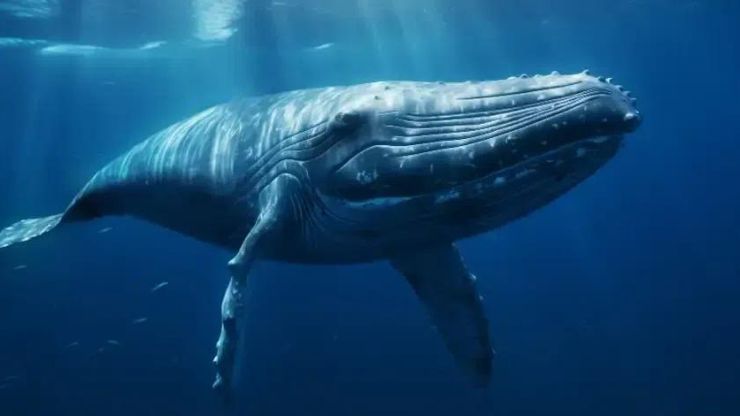Largest Animals Around The World – The world is home to an astonishing array of large animals, from the towering African Elephant to the majestic Blue Whale, spanning across diverse ecosystems from the depths of the oceans to the vast savannas and dense forests. Understanding these largest animals is crucial not only for appreciating the beauty of our natural world but also for grasping their ecological significance and the intricate balance they bring to their habitats. In this exploration, we delve into the realms of land, sea, and air to uncover some of the most remarkable giants that roam the Earth, soar through the skies, and navigate the depths of the ocean. By examining their physical characteristics, habitats, distributions, and conservation statuses, we gain insights into the challenges they face and the urgent need to protect these magnificent
Table of Contents
ToggleLargest Animals Around The World
Blue Whale:

The blue whale, scientifically known as Balaenoptera musculus, holds the title of being the largest animal to have ever roamed the Earth. With awe-inspiring dimensions, an adult blue whale can stretch up to 100 feet (30 meters) in length and weigh an astonishing 200 tons. These gentle giants primarily inhabit the world’s oceans, favoring cold and nutrient-rich waters. Feeding primarily on krill, blue whales possess baleen plates in their mouths, which act as filters to strain tiny crustaceans from seawater. Despite their massive size, blue whales are surprisingly graceful swimmers, capable of gliding through the water with ease. Unfortunately, they face numerous threats, including habitat degradation, ship strikes, and entanglement in fishing gear, making conservation efforts crucial for their survival.
Also, Read – The Most Popular Snake Species in the US
African Elephant:

The African elephant, scientifically known as Loxodonta africana, is the largest land animal on the planet. Distinguished by their large ears, elongated trunks, and impressive tusks, these majestic creatures roam the savannas and forests of Africa in tight-knit family groups led by a matriarch. Male African elephants, known as bulls, can weigh up to 12,000 pounds (5,400 kilograms) and stand towering at heights of up to 13 feet (4 meters) at the shoulder. Apart from their sheer size, African elephants are renowned for their intelligence, emotional depth, and complex social behaviors. However, they face significant threats from poaching, habitat loss, and human-wildlife conflict, making conservation efforts critical to ensuring their survival.
Giraffe:

The giraffe, known for its long neck and distinctive spotted coat, holds the title of being the tallest land animal in the world. Scientifically classified as Giraffa camelopardalis, these graceful herbivores inhabit the savannas and woodlands of Africa, where they feed on leaves from tall trees using their prehensile tongues. Male giraffes, called bulls, can reach heights of up to 18 feet (5.5 meters) and weigh as much as 3,000 pounds (1,360 kilograms). Apart from their extraordinary physical attributes, giraffes possess unique adaptations, including a powerful cardiovascular system to pump blood up their long necks and specialized ossicones (horn-like structures) atop their heads. Despite their iconic status, giraffe populations are declining due to habitat loss, poaching, and human encroachment, highlighting the urgent need for conservation action.
Saltwater Crocodile:

The saltwater crocodile, scientifically known as Crocodylus porosus, reigns as the largest living reptile on Earth, inhabiting the brackish and freshwater regions of the Indo-Pacific region. With formidable jaws, muscular bodies, and armored scales, these apex predators command respect in their ecosystems. Adult male saltwater crocodiles can reach lengths of up to 23 feet (7 meters) and weigh over 2,200 pounds (1,000 kilograms), making them formidable hunters capable of taking down large prey, including fish, mammals, and even other reptiles. Known for their remarkable adaptability and territorial behavior, saltwater crocodiles play a crucial role in maintaining the balance of their aquatic habitats. However, they face threats from habitat loss, poaching, and conflict with humans, underscoring the importance of conservation efforts to protect these ancient predators.
Don't just scroll, subscribe!
BuzzTrail's unique web-stories are the cure for boredom you've been waiting for.
Also, Read – 8 Types of Venomous Snakes in Your Yard
Colossal Squid:

The colossal squid, known scientifically as Mesonychoteuthis hamiltoni, ranks as one of the largest and most elusive invertebrates inhabiting the depths of the Southern Ocean. With massive eyes, powerful tentacles equipped with rotating hooks, and a gelatinous body, these deep-sea dwellers possess a formidable presence in their dark and frigid habitat. Colossal squids can grow to staggering lengths of up to 46 feet (14 meters) and weigh as much as 1,100 pounds (500 kilograms), making them true giants of the deep. Despite their immense size, much about these mysterious creatures remains shrouded in mystery, with only a few specimens ever being observed in their natural environment. Colossal squids primarily prey on fish and other cephalopods, using their stealth and agility to ambush unsuspecting victims in the darkness of the abyss. While they face minimal direct threats from humans, their deep-sea habitat is increasingly impacted by climate change and overfishing, highlighting the need for further research and conservation efforts to protect these enigmatic giants.
Polar Bear:

The polar bear, scientifically known as Ursus maritimus, holds the title of being the largest land carnivore on Earth, perfectly adapted to thrive in the harsh and unforgiving Arctic environment. With thick fur, a layer of blubber for insulation, and large, powerful bodies, polar bears are uniquely equipped to withstand the extreme cold and hunt for seals across the sea ice. Adult male polar bears can weigh up to 1,500 pounds (680 kilograms) and stand over 10 feet (3 meters) tall when on their hind legs, making them formidable predators in their icy realm. However, polar bears face significant threats from climate change, which is rapidly melting their sea ice habitat, reducing their access to prey and forcing them to travel greater distances in search of food. Additionally, pollution, oil and gas exploration, and human-wildlife conflict further jeopardize the survival of these iconic Arctic predators, highlighting the urgent need for conservation measures to protect their fragile ecosystem.
Ostrich:

The ostrich, scientifically known as Struthio camelus, holds the title of being the largest living bird in the world, renowned for its incredible speed and unique adaptations. Native to the open savannas and semi-arid regions of Africa, ostriches are flightless birds with long legs, powerful thighs, and large eyes. Adult ostriches can reach heights of up to 9 feet (2.7 meters) and weigh as much as 340 pounds (154 kilograms), making them formidable runners capable of reaching speeds of up to 45 miles per hour (72 kilometers per hour). Apart from their impressive size and speed, ostriches possess distinctive feathers, which are prized for their softness and durability. These large birds primarily feed on plants, seeds, and insects, using their keen eyesight to detect predators and threats in their environment. While ostrich populations are currently stable, they face threats from habitat loss, poaching for their feathers and meat, and competition with livestock, underscoring the importance of conservation efforts to ensure their long-term survival.
Conclusion
In concluding our exploration of the largest animals around the world, we’re reminded of the profound importance of conservation efforts. Preserving these magnificent creatures is not just about safeguarding individual species but also about maintaining the delicate balance of ecosystems and securing the future of our planet. As we continue to learn more about these giants and their habitats, let us commit to taking action to protect them, ensuring that these awe-inspiring animals can thrive for generations to come.
FAQs
What is the largest land animal in the world?
What is the largest land animal in the world?
The African Elephant holds the title of the largest land animal, with males reaching heights of up to 13 feet and weighing as much as 14,000 pounds.
Which is the largest marine animal?
Which is the largest marine animal?
The Blue Whale takes the crown as the largest marine animal and the largest animal ever known to have existed on Earth.

